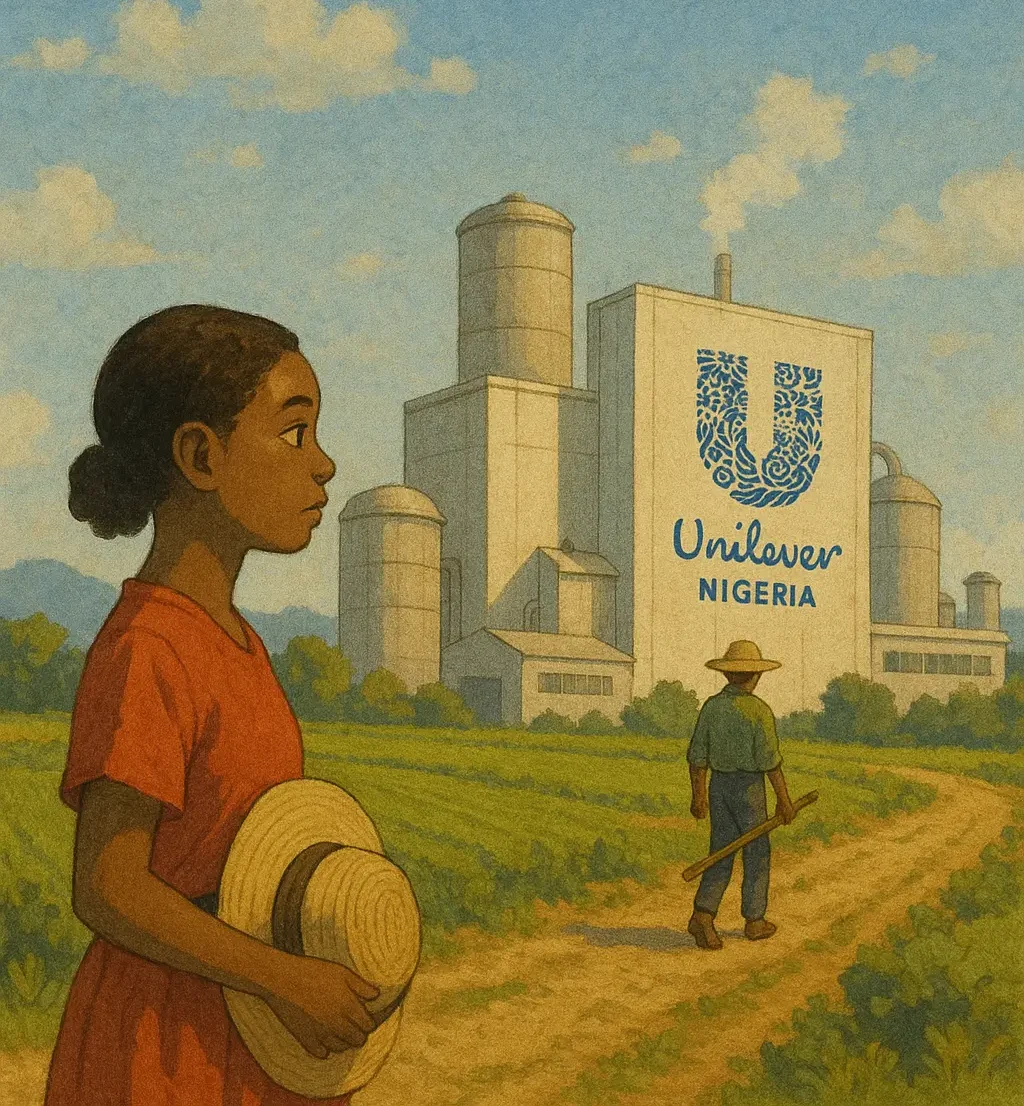
In the wake of the pandemic, the Ukraine war, and economic woes that plagued much of the continent, Unilever Nigeria’s local sourcing became a survival move, not just a strategy for maximizing output.
When global freight collapsed and raw materials vanished, most supply chains cracked. Unilever Nigeria’s supply chain couldn’t afford that, so it rebuilt operations from within. The local sourcing was a response to the forex crisis that made global sourcing much more expensive and difficult.
This story isn’t only about toothpaste or cassava. It’s about how one business turned risk into structure. For African supply chain professionals, this is more than information. It’s a guide.
The Foreign Exchange Squeeze That Forced a Rethink
When the COVID shockwaves hit, shipping rates doubled. As if that wasn’t enough, the Ukraine war forced the prices of wheat, oil, and other commodities to surge. Then Nigeria’s naira buckled. In 2023 alone, the currency lost over 70% of its value. That’s not a dip, it’s a crash.
Economic experts proved to be out of their depth, the government couldn’t offer immediate solutions, and the foreign exchange challenges in Nigeria became a daily friction. Multinationals needed dollars to pay global suppliers, but the banks ran dry.
Businesses queued for FX, but rates kept slipping. For Unilever Nigeria, importing essential ingredients, such as sorbitol for toothpaste, meant spending more naira for the same volume.
It was clear the company had to make some hard choices and come up with answers to some difficult questions, such as:
- What happens when a supply chain designed in Europe breaks in Lagos?
- Can a fast-moving consumer goods giant survive on imports in a volatile market?
The cost-to-sales ratio exposed the pain. Before COVID, Unilever Nigeria spent 68 kobo to make every naira in sales. That climbed with inflation. If the company didn’t adjust, the margin would vanish.
It was a difficult time for many manufacturers, and Unilever Nigeria wouldn’t wait for things to get worse.
Read more: How Kellogg’s Supply Chain Navigated the 2021 Workers’ Strike.
Unilever Nigeria Supply Chain Strategy: A Shift to Local Sourcing
Unilever Nigeria’s supply chain couldn’t wait for an economic fix from the government, so it designed a new strategy. In 2023, it made a bold change.
The company partnered with Psaltry International, a Nigerian agro-processor, to produce sorbitol from cassava, which will replace their imported corn syrup from China. This meant there were no more shipping delays and no FX volatility.
Cassava, grown in Oyo State, was turned into a sweetener for Close-Up and Pepsodent. It was the beginning of the Unilever cassava sorbitol project. And it worked. The company helped Psaltry expand. And secured supply by integrating the farming base.
Over 10,000 Nigerian farmers were added to the system. Many were first-timers in industrial agriculture. However, Unilever Nigeria trained them. Psaltry processed the crop. Then Unilever bought it, stabilizing demand and reducing FX exposure.
Cassava industrial use in Nigeria found a new path. Not in fufu. Not in garri. But in a global product: toothpaste.
Impact: Numbers That Prove Unilever Nigeria’s Local Sourcing Worked
On its face, Unilever Nigeria’s local sourcing strategy may look like a waste of money. Why help suppliers do their part? Why invest so much money in getting them to supply the products you need? The numbers show that it wasn’t charity. This was supply chain economics.
For starters, Unilever Nigeria cut its dependency on FX-heavy imports. As of late 2023, more than 70% of raw materials came from within Africa. That’s up from less than 30% a few years earlier. The Lagos factory switched inputs and secured costs.
The numbers also show resilience:
1. Turnover & Margins
Unilever Nigeria’s sales grew strongly pre‑pandemic (turnover was ₦70.5 bn in 2021). By localizing, its gross margin jumped from 11.0% (2019) to 34.7% (2023) and 41.0% (9M 2024).
Through advanced procurements, its cost-to-sales ratio fell from 68.0% (2019) to 58.7% (9M 2024).
2. Supply Mix
Unilever Nigeria now sources roughly 70% of Psaltry’s sorbitol supply (down from 0% in 2021), and overall, more than two-thirds of all inputs for its African products come from the continent.
This contrasts with ~20% local sourcing a decade ago, highlighting how rapidly the model scaled.
3. Local Impact
The Nigerian sorbitol program ties in 10,000 smallholders and generates 25,000 jobs. By replacing imports, it saves about US$10 million per year. As noted, farmers report income rises of 2–3× under the new arrangement.
4. Sector Context
For perspective, Nigeria’s consumer‐goods industry saw raw‐material costs soar as the naira collapsed: one analysis found operating expenses up 67% in H1 2024 vs H1 2023.
Against that backdrop, Unilever Nigeria’s cost metrics and stock performance (52-week high in late 2024) underscore its success in hedging the currency via local sourcing.
Read more: Discover The Principles Behind MTN’s Supply Chain Success.
Lessons: What African Supply Chains Must Learn
Experts have long argued that local sourcing preserves foreign exchange and builds local industry. Unilever Nigeria’s experience illustrates a powerful model for African supply chains in the wake of the economic downturn plaguing various countries across.
1. Shift Where You Spend Your Money
Companies must stop defaulting to imports. If a factory buys corn syrup from Belgium, it’s burning FX. If it sources cassava from Kwara, it circulates capital at home. And it is possible if more companies are willing to invest in their suppliers.
The hard truth is this: Import substitution in Africa begins when procurement officers change supplier lists, not when presidents change policy.
2. Build Your Suppliers
Don’t just find a local processor, build one. Psaltry didn’t already have industrial-grade sorbitol. Unilever Nigeria helped finance the expansion, and then it guaranteed the purchase. That allowed local banks like FCMB to support the factory with credit.
This model, anchor buyer + agro-processor + finance, is what African firms need. The ROI on investment is too good to overlook.
3. Secure Your Margins with Local Input
Currency volatility can’t be managed only with hedging or pricing tactics. It must be managed through supply chain localization. If your input is priced in Naira, your risk drops. This stabilizes the margin. And margin, not just volume, keeps businesses alive.
4. Turn Farmers into Partners
Smallholders won’t scale alone. They need structure, training, and a guaranteed offtake. Unilever Nigeria helped 10,000 farmers meet industrial cassava standards. It shared farming practices, connected agronomists, and supported logistics.
That’s how scattered growers become dependable suppliers.
Applying the Unilever Nigeria’s Local Sourcing Model: What African Supply Chains Should Do
The Unilever Nigeria’s local sourcing playbook is not just for the company. Businesses and supply chains across the continent can adopt the same, from beverages to hygiene, personal care, and pharmaceuticals.
Here is what to do:
Step 1: Map What Can Be Sourced Locally
Every company should audit its raw materials. What do you import that could be grown, mined, or produced locally with moderate investment? For example, corn starch for noodles, palm kernel oil for soaps, and rice husks for packaging filler.
Step 2: Partner, Don’t Poach
Find a local processor with basic capacity. Then scale it. Don’t wait until it matches the global spec; help it get there. Your demand is the key to making that growth viable.
Step 3: Finance the Missing Middle
If the processor lacks machinery, use forward contracts or guarantee letters. Bring in a local bank. With visibility of demand, most banks will lend. This fills the missing link between the farmer and the factory.
Step 4: Train the Base
Capacity doesn’t start in the warehouse. It starts on the farm. Invest in agronomy, inputs, and basic yield support. If your processor can’t get cassava, you can’t get toothpaste. It’s that simple.
Supply chain resilience in Africa is rooted in the soil, not just the software.
Read more: How Walmart’s food supply chain used blockchain to enhance traceability.
Final Thought: Build Your Strength Where You Stand
Unilever Nigeria did not localize to score ESG points. It did so because it had to survive. But in doing that, it built something stronger than before. It built control, margin, stability, and jobs.
African supply chains must move from dependency to design.
It’s no longer about reacting to a crisis. It’s about building systems that thrive within them.
Let this serve as your blueprint. Local sourcing is not a trend; it is a strategy. It is a structure. And for those who get it right, it is power.

Obinabo Tochukwu Tabansi is a supply chain digital writer (Content writer & Ghostwriter) helping professionals and business owners across Africa learn from real-world supply chain wins and setbacks and apply proven strategies to their own operations. He also crafts social content for logistics and supply chain companies, turning their solutions and insights into engaging posts that drive visibility and trust.








